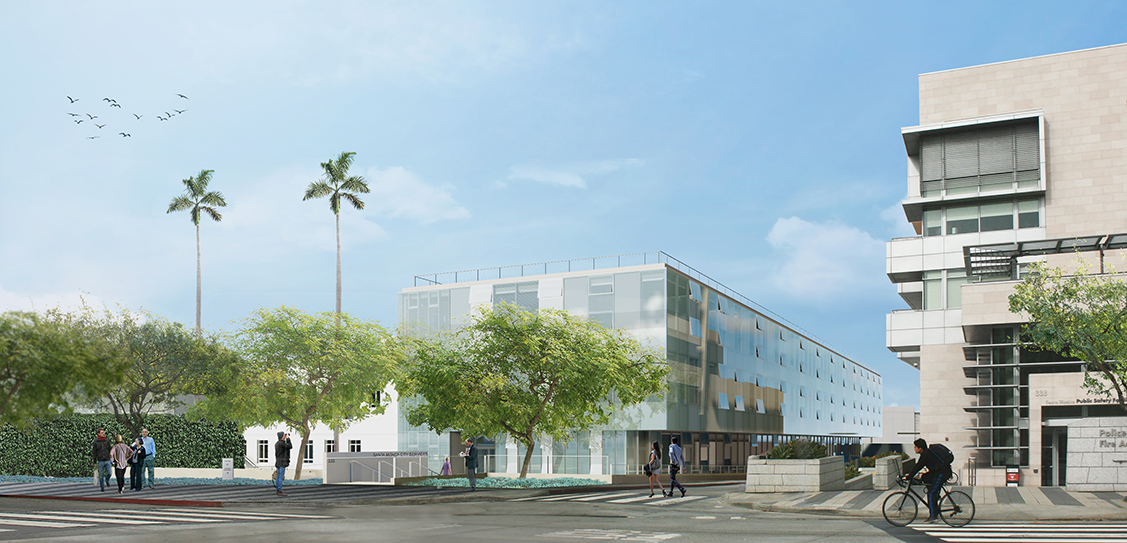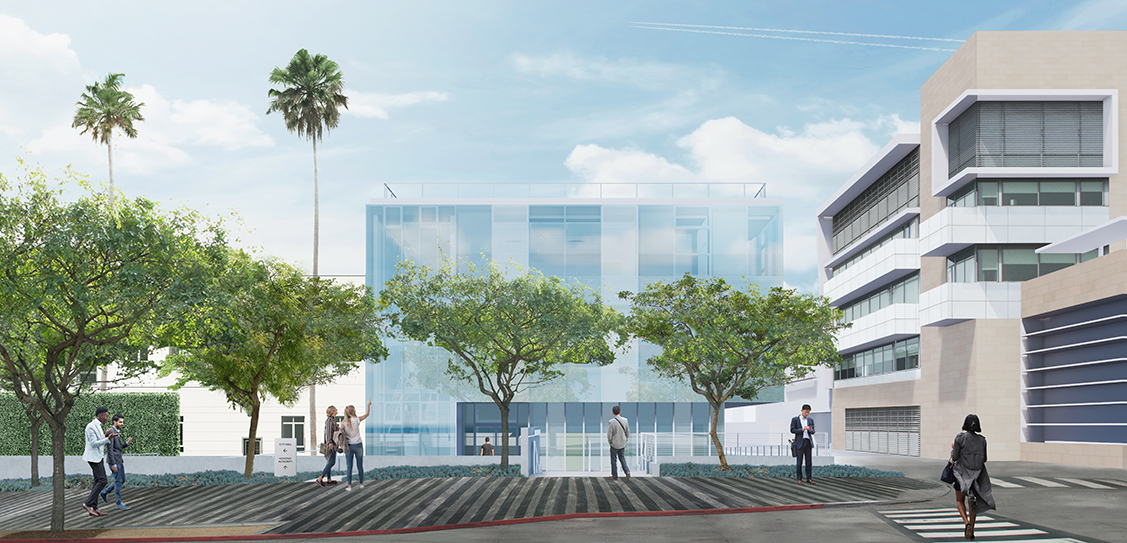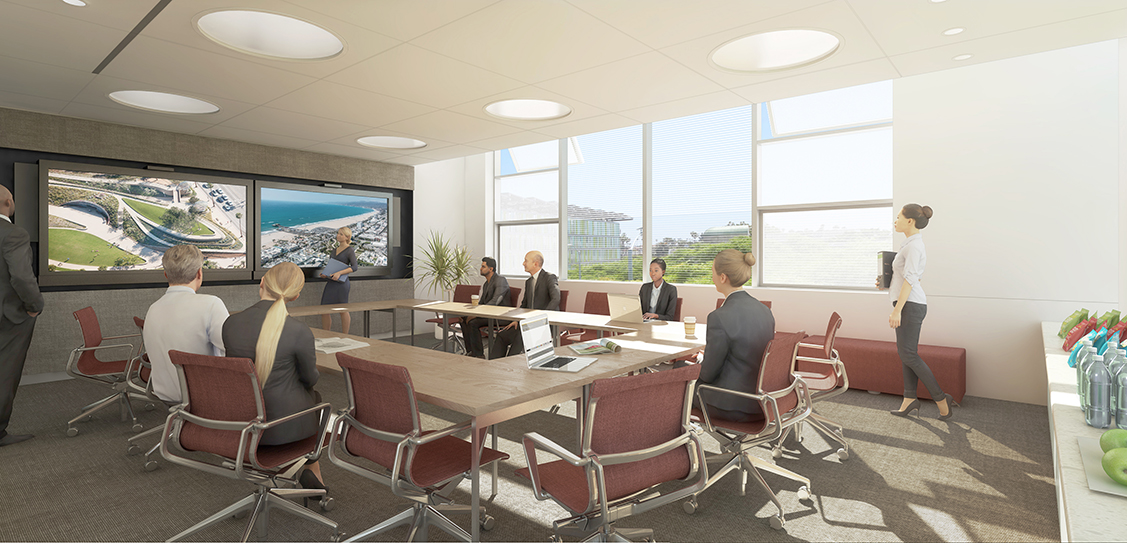Designed by Frederick Fisher and Partners (FF&P) along with engineering firm BuroHappold Engineering and general contractor Hathaway Dinwiddie Construction Co., the Santa Monica City Services Building will be the largest civic building of this density in the world to fulfill the Living Building Challenge, the world’s most rigorous and comprehensive green building standard.
The use of highly advanced water reclamation systems, composting, energy conservation and on-site farming will set a landmark example for architecture and urban design, highlighting an unprecedented commitment to energy self-sufficiency and reduced wastefulness. The building has received the AIA Los Angeles’ highest COTE NEXT award for environmental design and sustainability in the category of an institutional or civic structure.
Over the past decades, various municipal departments for the City of Santa Monica were spread throughout the city, including those for Housing and Economic Development, Finance and Risk Management, the Office of Sustainability and the Environment, Architecture Services, Civil Engineering and Cultural Affairs. This disjointed format reduced efficiency for the public interfacing with civic offices as well as for intergovernmental department coordination. The City of Santa Monica brought on FF&P out of a need to consolidate these municipal services at one location situated behind the Historic 1939 Parkinson and Estep designed City Hall.
To meet Living Building Challenge criteria set by the International Living Future Institute, the City Services Building was designed to be “healthy and beautiful, surpassing even the highest Leadership in Energy and Environmental Design (LEED) certification requirements.” The building was designed to offer “regenerative spaces that connect occupants to light, air, food, nature, and community,” and be self-sufficient within the resource limits of its site, producing more energy than it uses, collecting and treating water on the site, ultimately “creating a positive impact on the human and natural systems that interact with them.”
To achieve these ambitious standards, the City Services Building was fitted from the outset with passive design techniques that maximise daylight, exterior views and natural ventilation to ensure occupant comfort while streamlining energy use. Numerous systems are employed throughout and within the building to deliver the landmark zero waste generation and self-sufficiency that is required for Living Building Certification.
These include nearly 15,000 sq ft of photovoltaic solar arrays fitted throughout the new structure, part of other comprehensive “closed-loop” systems for energy, water, waste and composting. The basement floors contain areas for recycling, mechanical operations, water treatment and storage with a cistern connecting to an on-site well. In this regard, the building has the distinction of being the first structure in California to be granted the rights to convert rain-to-potable water on site.
FF&P also developed a plan that converted the adjacent land into a comprehensive civic campus, where both city workers and the public benefit, while the historically landmarked art deco City Hall building retains its architectural prominence within the masterplan. The building’s exterior glass envelope symbolises the civic commitment towards transparency in the building’s mission to serve the public, while also reflecting the light conditions of the sky which change throughout the day. The simple rectilinear volume complements the bold geometries of the original Art Deco style of the historic Santa Monica City Hall, placing both structures in a complementary dialogue.
Inside the building, a variety of central, open workspaces, meeting and collaboration areas promote interaction while smaller rooms allow for individual privacy when needed. The courtyard, which connects the new building to the historic City Hall, offers additional work and leisure areas with trees and other flora that generate shade, assist with cooling and insulation, and provide edible herbs and produce for building workers and local shelters.
The systems envisioned for the City Services Building are not only seen in the context of environmentally sustainability, but also financial sustainability. Envisioned with a 100 year lifespan, the building will cost less than the projected cost of private commercial lease agreements that previously housed the various city agencies within 30 years. This means the City will not be burdened with expensive lease agreements, especially as rental prices in Downtown Santa Monica are expected to rise continually.



